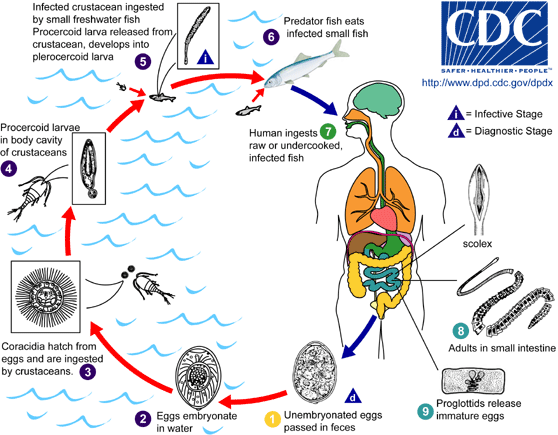The tapeworm—Diphyllobothrium latum is in the Pseudophyllidean order specifically designated to fish tapeworms. Diphylobothrium infection, causes diphyllobothriasis and is transferred from raw fish to humans, dogs and bears.
Pike, salmon, trout and perch are the major source for humans, so be sure to examine your lox before you put it onto your bagel and you might want to ask what kind of fish are in your sushi! Actually, most any animal eating raw fish can also get this particular tapeworm.
Lifecycle Stages of Diphyllobothrium:
The arrows in the pictures below point to the cap (operculum) of the Coracidum (egg) where all the immature parasites (called copepods) hatch from when they are old enough. These immature copepods form tiny little tapeworms inside them. These young tapeworms are called Procercoids. The fish eat these and the baby tapeworm then transforms into an infective stage called the Pleurocercoid.
The infective pleurocercoid is then eaten by a Host (the living creature with optimal nutrition and components that allows a baby worm to mature into the adult form). In this case raw fish containing the pre-adult is eaten by a human, dog, or bear.
To read about symptoms, how to diagnose and treatment of Tapeworms, go to the Tapeworm Introduction page.
Reference: https://www.dpd.cdc.gov/dpdx/HTML/Diphyllobothriasis.htm
